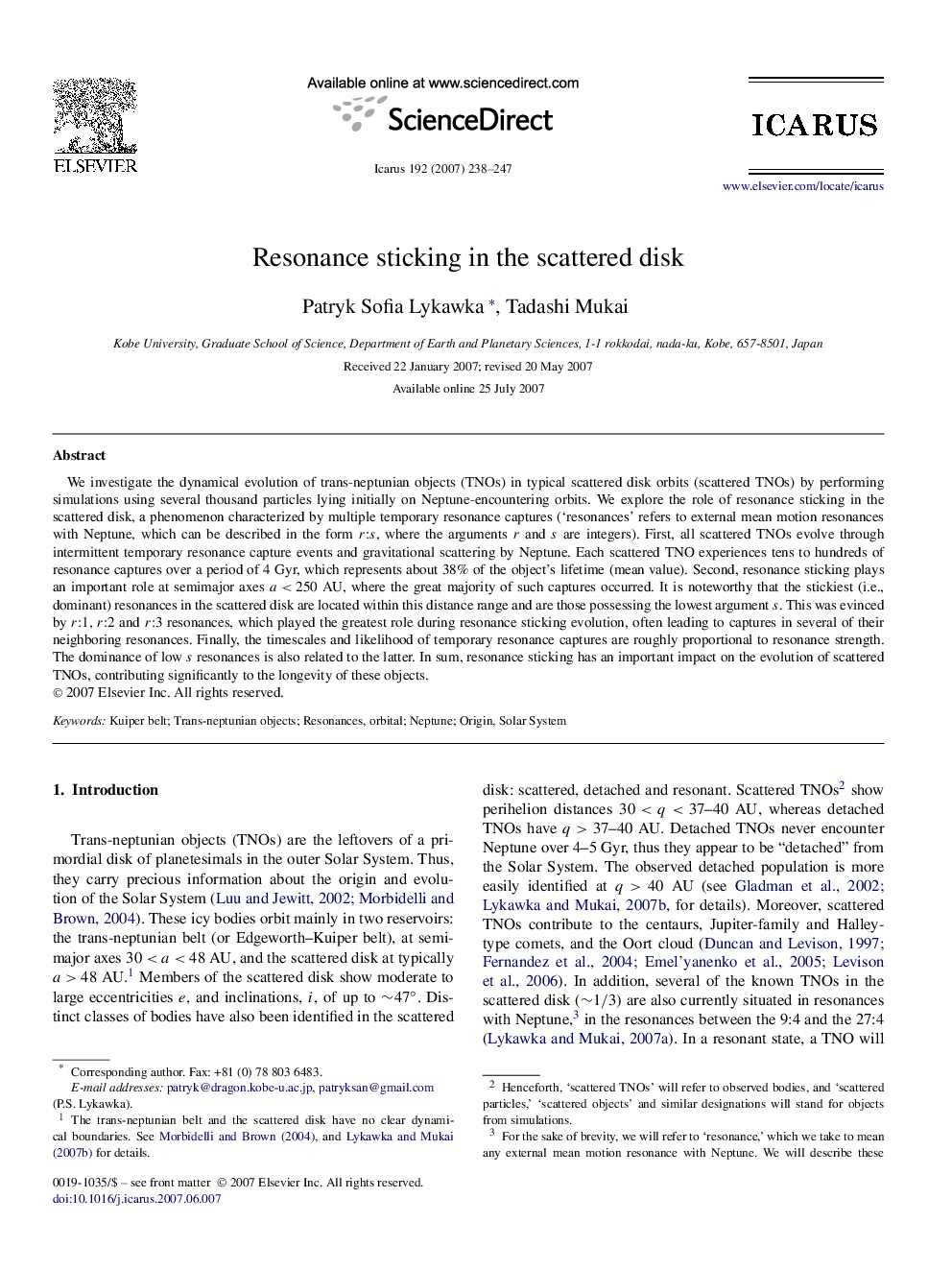| کد مقاله | کد نشریه | سال انتشار | مقاله انگلیسی | نسخه تمام متن |
|---|---|---|---|---|
| 1775454 | 1021194 | 2007 | 10 صفحه PDF | دانلود رایگان |

We investigate the dynamical evolution of trans-neptunian objects (TNOs) in typical scattered disk orbits (scattered TNOs) by performing simulations using several thousand particles lying initially on Neptune-encountering orbits. We explore the role of resonance sticking in the scattered disk, a phenomenon characterized by multiple temporary resonance captures (‘resonances’ refers to external mean motion resonances with Neptune, which can be described in the form r:sr:s, where the arguments r and s are integers). First, all scattered TNOs evolve through intermittent temporary resonance capture events and gravitational scattering by Neptune. Each scattered TNO experiences tens to hundreds of resonance captures over a period of 4 Gyr, which represents about 38% of the object's lifetime (mean value). Second, resonance sticking plays an important role at semimajor axes a<250AU, where the great majority of such captures occurred. It is noteworthy that the stickiest (i.e., dominant) resonances in the scattered disk are located within this distance range and are those possessing the lowest argument s . This was evinced by r:1r:1, r:2r:2 and r:3r:3 resonances, which played the greatest role during resonance sticking evolution, often leading to captures in several of their neighboring resonances. Finally, the timescales and likelihood of temporary resonance captures are roughly proportional to resonance strength. The dominance of low s resonances is also related to the latter. In sum, resonance sticking has an important impact on the evolution of scattered TNOs, contributing significantly to the longevity of these objects.
Journal: Icarus - Volume 192, Issue 1, 1 December 2007, Pages 238–247